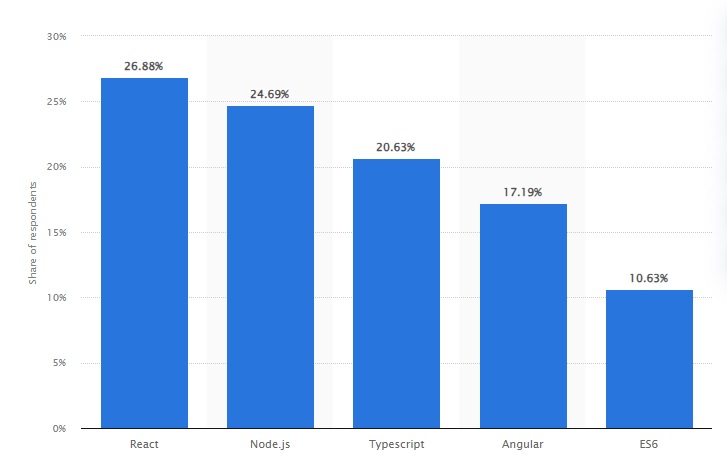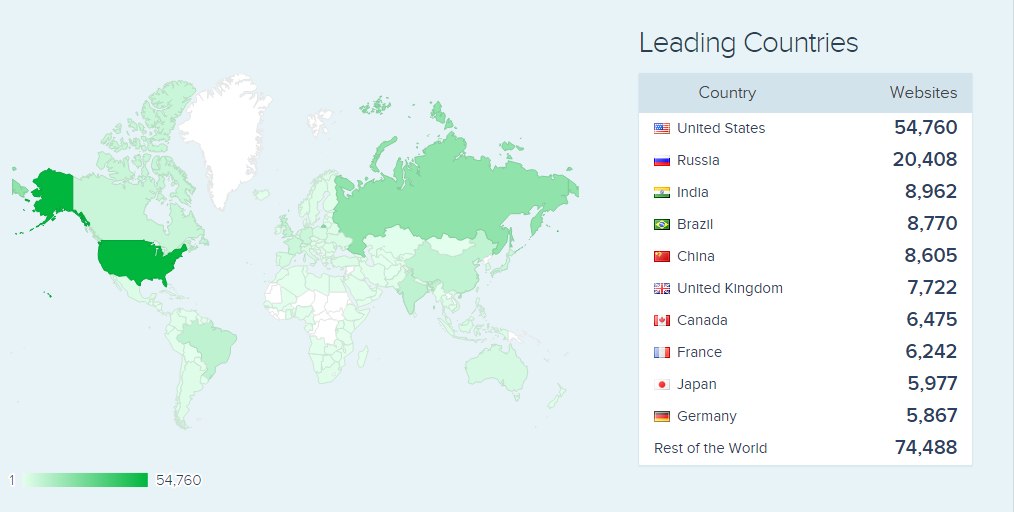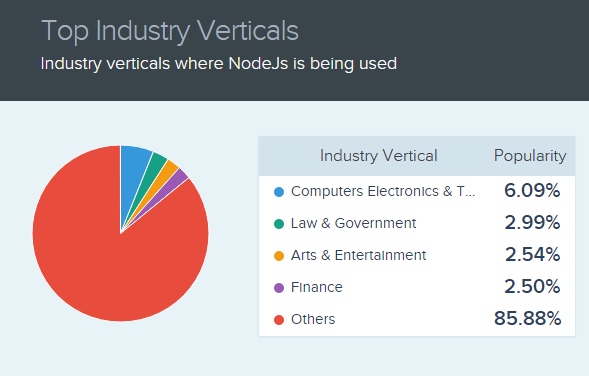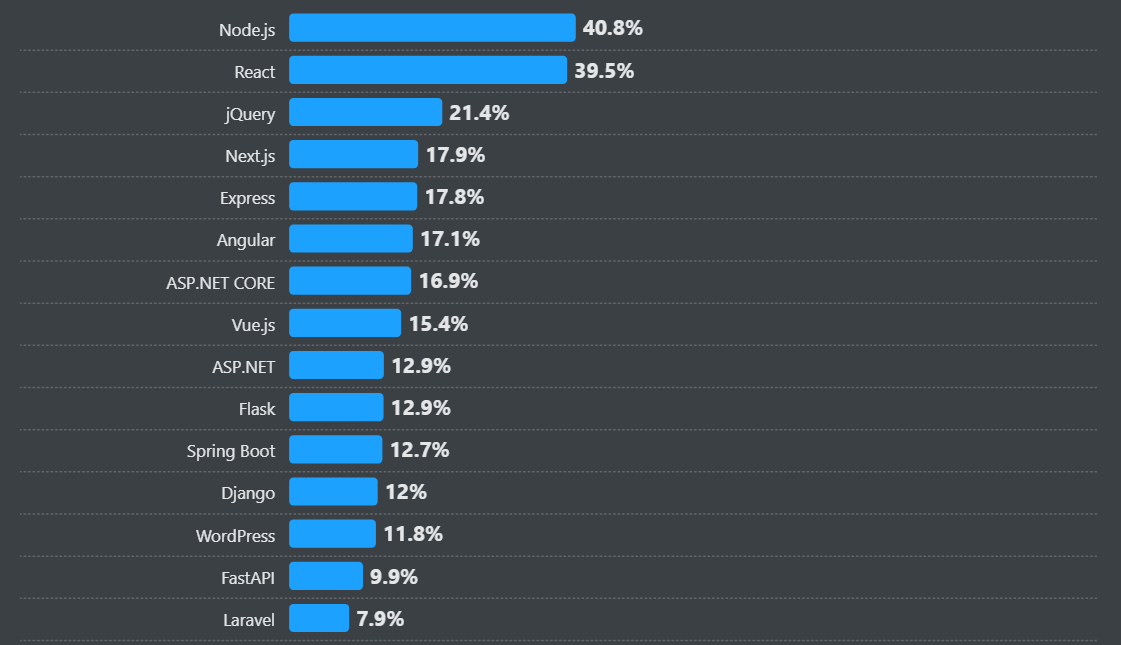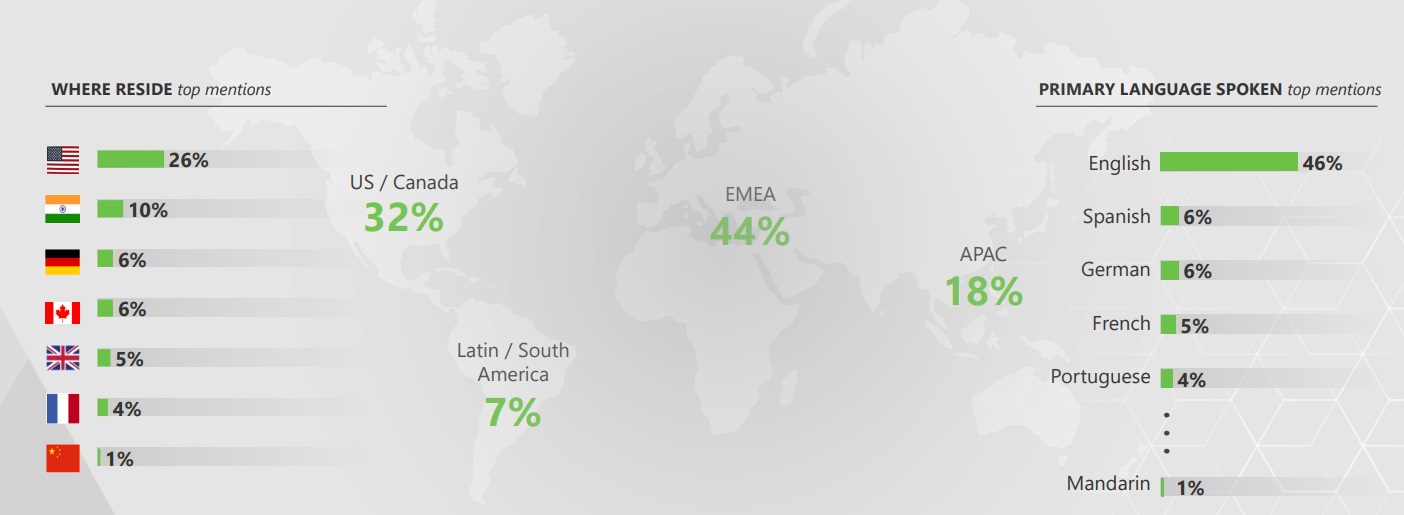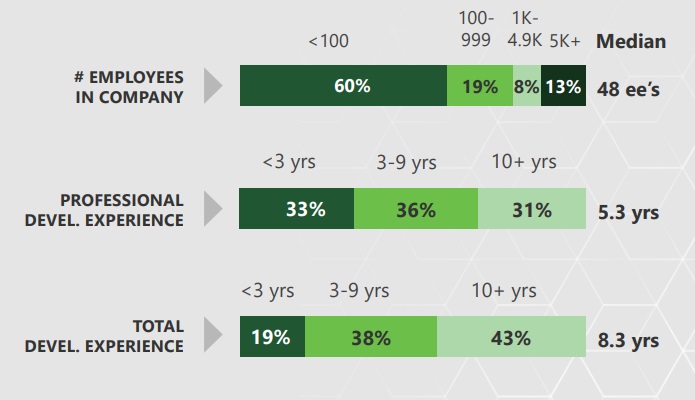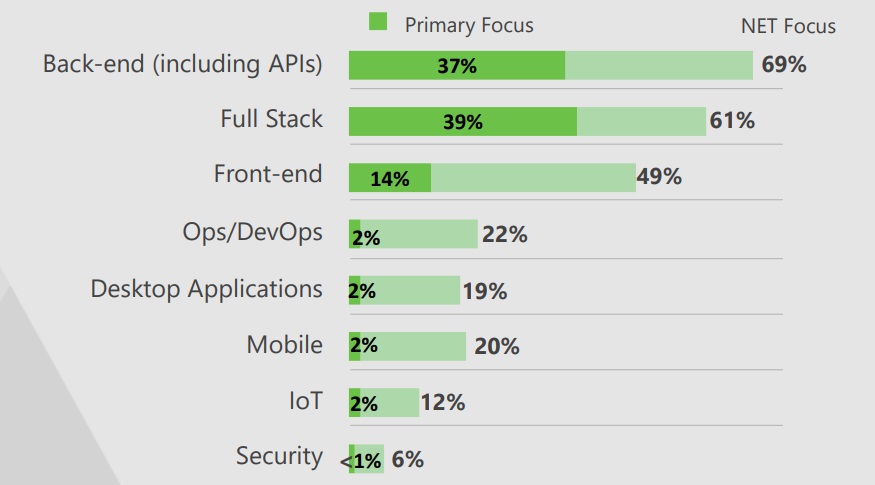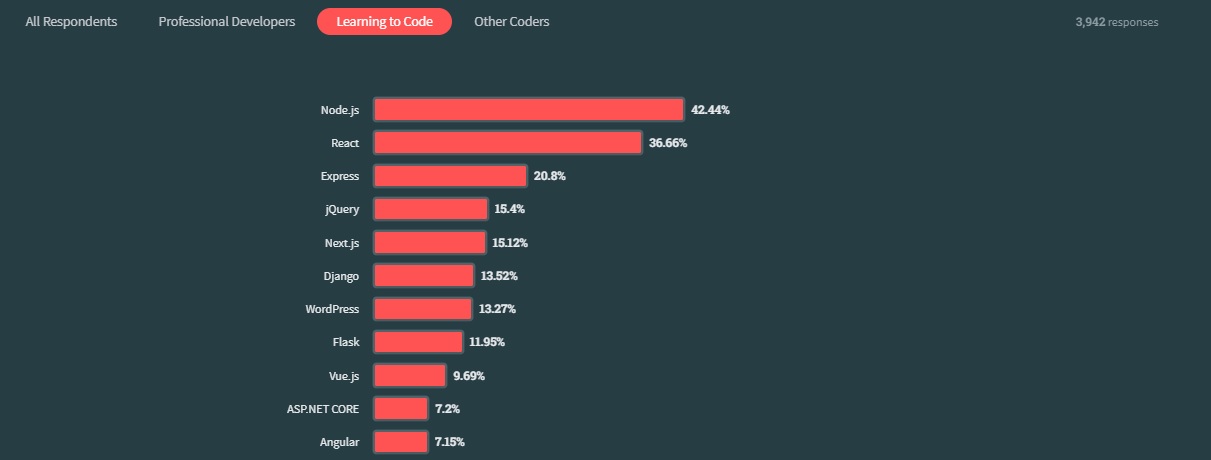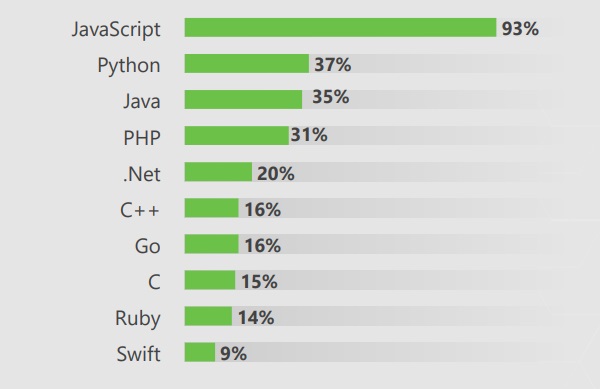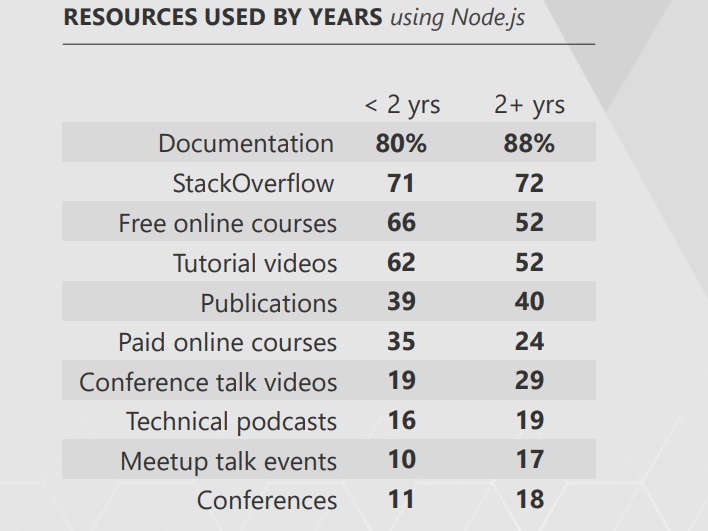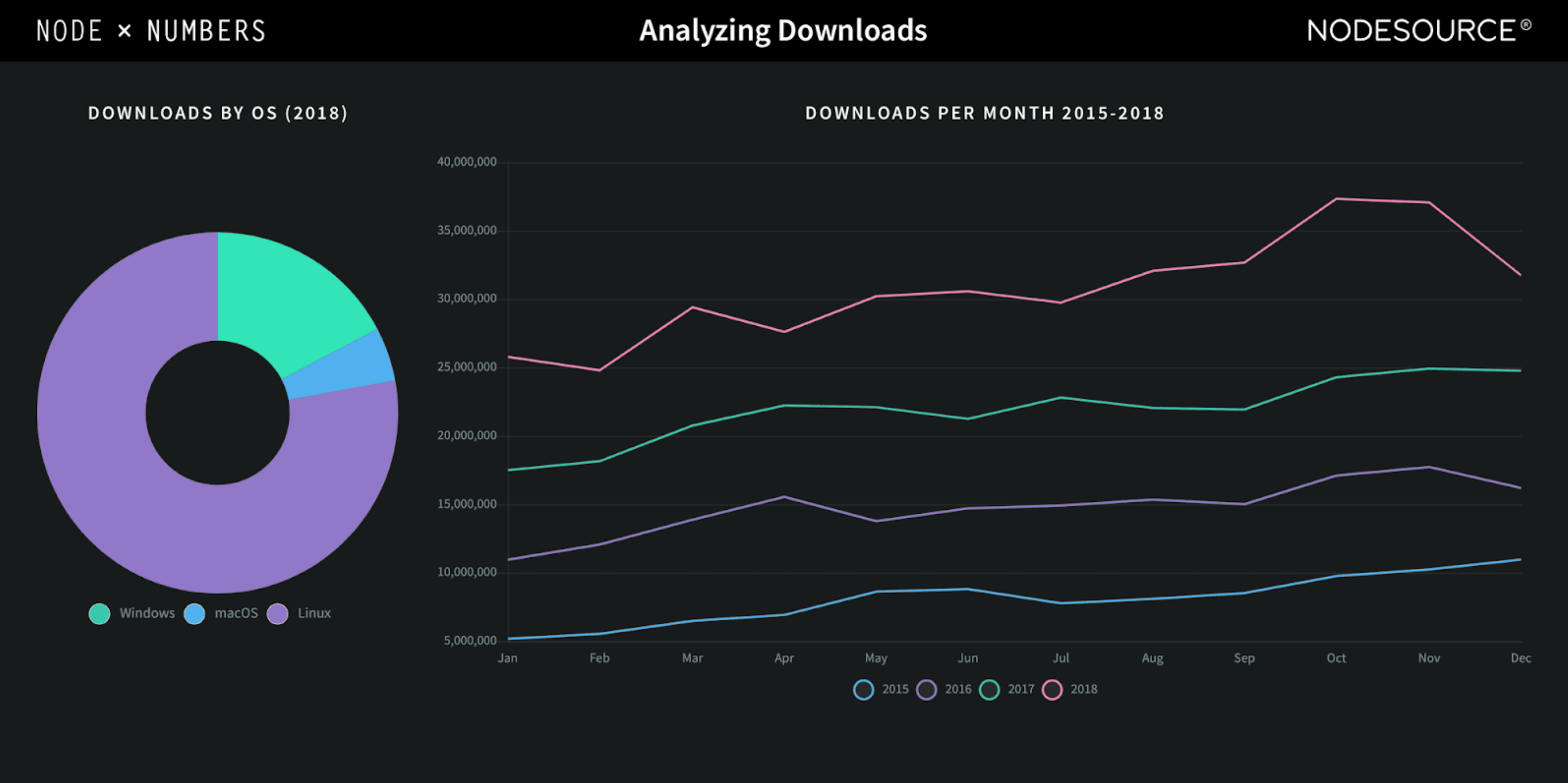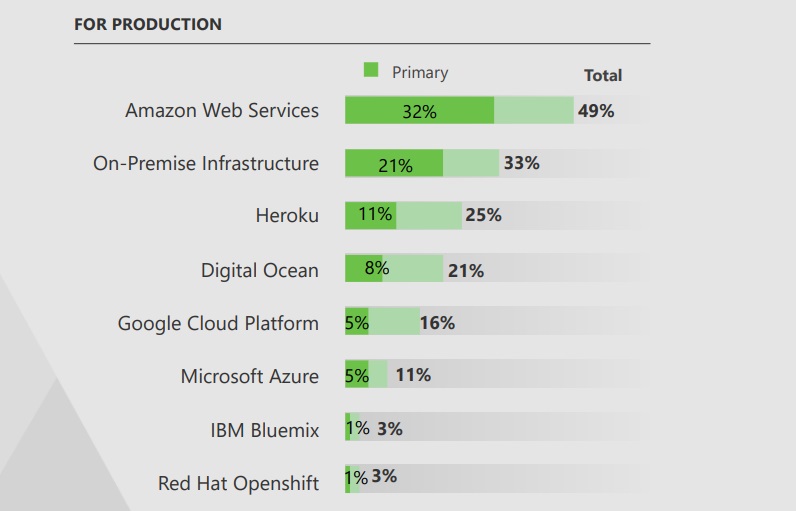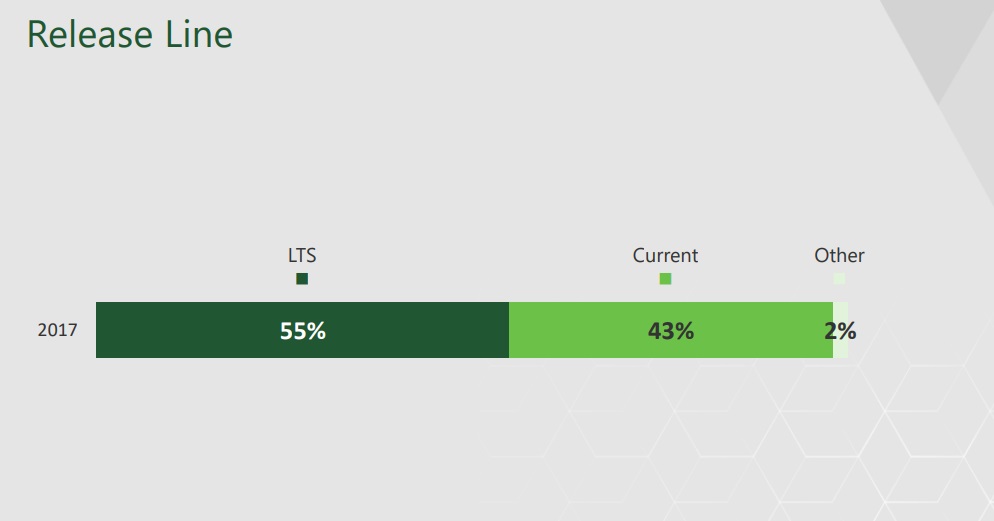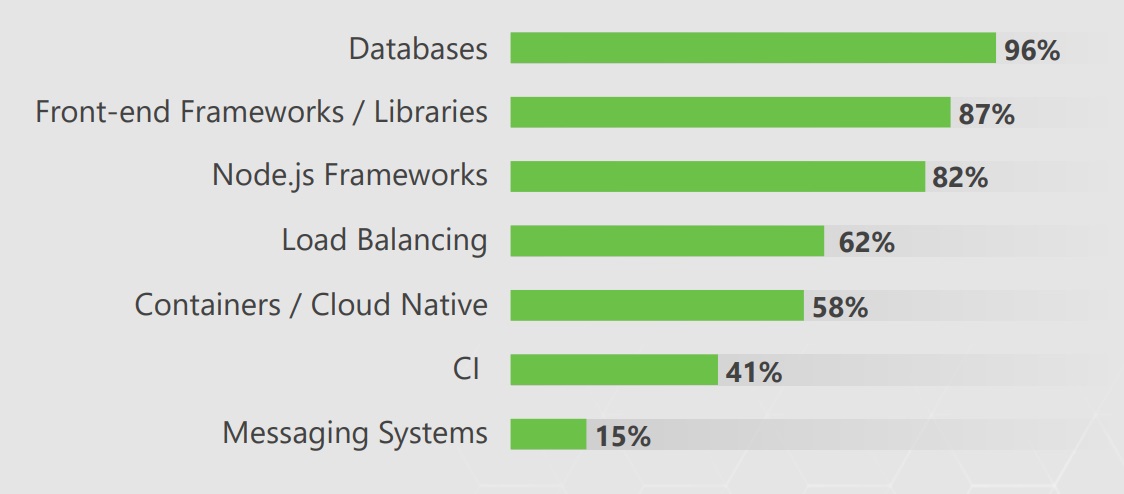Quick Summary :- Node JS is rapidly becoming the most popular technology stack for developing web applications. Businesses and developers prefer Node JS over other technology stacks because of its features, learning curve, speed, and efficiency. To better understand the adoption of the technology, we have listed some of the most compelling Nodejs statistics in this blog.
One technology that has changed the web development scenario with its arrival and is showing promising future potential is Node.js. A brilliant back-end versatile technology, Node.js has simplified making dynamic next-gen web solutions while helping businesses get high ROI for their digitization efforts.
However, on the path of fast-paced digitalization, Node.js has not lost its magic. We will be talking about some of the staggering numbers related to the technology that will convince you that Node.js is not a tech to miss out on. These Nodejs usage statistics will let you delve deeper into the technology and build more affinity for its use in your future-ready web projects.
So, let’s embark on a journey to get to know Node.js more closely.
What is Node JS?
Node JS is an open-source, single-threaded, run-time environment written in JavaScript that is useful for building real-time applications. It was released in 2009, and it has completed a glorious 15 years of being a preferred technology among developers across the world. Moreover, it is built on Google’s V8 engine, which gives it superb processing speed.
Node JS applications run in a single process without creating a new thread for every request. This enables Node JS to handle thousands of concurrent connections with a single server. As per Statista, Node JS was the second most popular technology skill in the JavaScript tech stack back in 2022.
NodeJS Statistics on its Geographical Presence
It is estimated that around 6.3 million websites use Node.js as a development technology, which makes it the most widely used tool for web development services. These Node JS statistics signify the penetration of the technology in the web development world.
Node.js is most popular in the United States and has a fair share of the web development market across the world. It is interesting to see that this technology has touched every part and corner of the world.
It is not just the geographical dominance that Node JS has, but it has very good penetration in a wide array of industries.
NodeJS Statistics Based on Industry Verticals Using It
Node JS has found its application across a majority of industries. The graph depicted above signifies the versatility of Node JS. It is interesting to see that Node JS is a popular JavaScript framework in the financial industry and is trusted for monetary transactions over traditional technologies. The NodeJS usage statistics by the law and government sectors are also an indicator that this technology can be used in applications built for the masses.
The majority of Node JS applications (6.09%) are built in the Electronics, Computer, and Technology industries, which signifies the prowess of Node JS within the Technology and Development community. It is followed by Law and Government at a share of 2.99%. The other top two industries that use Node JS are Arts and Entertainment at 2.54% and Finance at 2.5%.
So, let’s take a look at why businesses use Node.js, with some impressive figures.
Node JS Statistics on Why Businesses Use Node.js Over Other Technologies
1) Node.js has a large and active community. Hence, developers can easily find pre-built modules for the development of applications without reinventing the wheel. Therefore, it is recommended to hire NodeJS developers possessing Node.js expertise as it is relatively easier than finding developers with expertise in other frameworks. This significantly reduces time and costs for businesses.
2) Companies that use Node JS have experienced a drop in their development costs by 58%. This is primarily because both back-end and front-end developers use the same language for programming, which reduces the human resources needed for a project.
3) Many businesses have seen positive outcomes after using Node.js. It is reported that businesses were able to save 12% in their development costs after using Node JS for 2 years. These NodeJS development statistics are a clear indicator that the technology is also business-friendly. Apart from its rich features, speed, and efficiency, Node JS is also a money-saver.
4) Node.js is a proven technology that increases the efficiency of business applications. Only 4% of the businesses that use Node JS reported that they witnessed no change after using Node JS. These NodeJS usage statistics are an indicator that the technology has a high success rate.
5) The use of Node.js can reduce page load time by 50% to 60%. This makes Node.js an ideal choice for developing one-page apps and data-streaming applications. Node JS has a proven record of enhancing the performance of websites by reducing page load times.
–LinkedIn experienced a reduction in page load time of 20% after switching to Node JS.
–Netflix experienced a reduction in page load time of 60% after switching to Node JS.
6) PayPal, which uses Node.js as its programming language, has experienced a drop of 35%, and their pages load 200 ms faster than they used to while using Java.
7) Walmart is one of the companies that uses Node.js on their website and mobile applications. They receive around 80 million visitors monthly, and to cater to them, they use the Node.js architecture to improve the SEO of the application and enhance checkout conversions. These NodeJS statistics imply that the technology can host high-volume web businesses.
8) Node JS has usability in every industry application, but it is reported that it is primarily used to build e-commerce sites, crowd-funding applications, IoT applications, and payment processing applications.
9) Node JS is powering the most advanced applications built in modern times. We all know Amazon for being an e-commerce behemoth, but did you know that Amazon uses Node JS for many of its features? Joining the bandwagon, Netflix, the superior video streaming application, also uses Node.js development. Reddit, LinkedIn, PayPal, and eBay are the other big names on the list of businesses using Node.js.
10) Two of the world’s biggest online marketplaces, eBay and AliExpress, use Node JS for their backend programming. They use Node.js primarily for its speed and reliability.
11) Node JS is widely known for its efficiency, which makes businesses require fewer servers to reach the client. Lesser servers also mean that less manpower is required to maintain those servers. This reduces the overall costs of deployment and maintenance.
General Node JS Statistics About its Reach and Adoption
12) More than 6.3 million web applications have been built using Node JS. Some of the big names that are associated with Node JS include Uber, Netflix, Twitter, GoDaddy, LinkedIn, eBay, Groupon, NASA, Medium, PayPal, and Trello.
13) In 2023, Node JS hit the mark of 1.2 billion downloads, and in present times, it is hovering around 1.4 billion downloads. Such is the popularity of Node JS, considering that it is a relatively newer technology.
14) In the year 2018, Node JS witnessed an average of 1 million downloads every day, which amounted to more than 360 million downloads a year. This was quite a benchmark for technology that was relatively new. It was also a testament to the viability of Node JS.
15) As per a study, it was found that 271694 companies started to use Node JS as their programming language in 2024.
- It was found that 6385 JQuery users wanted to make a shift to Node JS rather than JQuery in 2024.
- 19793 Node JS users wanted to work again with Node JS as a preference over all other technologies.
- 9028 Express users have shown a positive interest in working with Node JS. 4923 Vue JS users want to work with Node JS.
These NodeJS usage statistics signify the adoption of the technology and how developers prefer it over others.
16) Around 40.8% of experienced web developers use Node JS frameworks, libraries, IDEs, and tools for their web application projects. These NodeJS statistics signify that the technology is gaining traction and popularity among mature developers.
17) In present times, Node JS has a market share of more than 4.24%. It might seem small, but it is relatively good, keeping in mind that there are so many programming technologies out there. It is to be noted that the market share of Node JS has grown to 4.24% from 1.11% in just 3 years. The biggest market share holder is WordPress, at 33.6%.
18) Developers and people around the world associate Node JS with words like fast, easy, simple, powerful, and flexible. This gives a fair idea of what perception people and developers have of Node JS and where this technology stands.
Node JS Statistics About Developers
19) According to a study by IDC, usage of Node JS increases developers’ productivity by 68%. There are numerous reasons behind it, the top one being that Node JS allows developers to use JavaScript to write both front-end and back-end code. This reduces the learning curve and makes it easier for developers to maintain the code base.
20) Node JS developers comprise a younger audience, with 46% of them ranging between the ages of 25 and 35. This translates well in favor of both Node JS and a younger audience, meaning that the lifespan of Node JS is going to last a long time for developers who are getting hands-on with the latest technology. It is also interesting to note that 36.42% of these developers have actively used the best NodeJS IDEs, libraries and frameworks. These NodeJS usage statistics are a clear indicator of the application of this technology.
21) The popularity of Node JS is not limited to a certain geography and is accepted by developers in 85 different countries. Developers with a background in over 45 distinct native languages are also using Node JS.
22) 46% of the total Node JS developers are English-speaking, indicating its popularity in English-speaking nations. They are followed by German and Spanish speakers, who count for 6%.
23)It is estimated that around 32% of the total Node JS developers are based in the United States and Canada, which represents a major chunk of developers. They are followed by 44% of developers who are based in EMEA. It is interesting to note that the majority of Node.js developers are from countries with a better pay-scale economy.
24) 91% of Node JS developers from the United States and Canada are male. These Nodejs statistics signify that male developers find Node JS more appealing and rewarding, considering that women in the overall programming world constitute a total of 25%.
25) 60% of the total Node JS developers are employed by businesses with a team size of less than 100 employees. It signifies that Node JS is quite a popular JavaScript Framework amongst startups and small businesses due to its diversity, performance, flexibility, and cost-effectiveness.
26) 60% of the total Node JS developers have a working experience of more than 5 years, which signifies that developers prefer Node JS in their mid-career journey. This also symbolizes the sense of stability that Node JS has to offer.
27) Node JS is a favorite among developers who are into full-stack development. It is estimated that 3 out of 4 Node JS programmers are into back-end development or full-stack development. The remaining 1 out of 4 are the programmers that use Node JS for front-end development. This depicts the prowess of Node JS in server-side programming.
28) 36% of the total Node JS developers have experience ranging from 3 to 9 years. Developers who have worked on different technologies tend to pick it up readily, considering the benefits Node JS has to offer.
29) The usage of Node JS is primarily seen in the web application world. Currently, around 85% of developers use Node.js for creating web applications, which is the majority of its use. These NodeJS usage statistics express the prowess of technology within the web development world. On the contrary, a lesser 43% of developers use Node JS for creating enterprise-level applications. As per the experts, Node.js is a perfect choice when it comes to the development of web applications.
30) By the end of 2023, the total number of Node JS developers around the world will have reached 27 million. Alone in the United States, the number of Node JS developers is estimated to be more than 4 million. It is to be noted that these numbers are growing rapidly with time. Now, that is what you can call a popular technology.
31) Around 62% of the Node JS developers are white or Caucasian. This number is not alarming, as 72% of all programmers are white or Caucasian. The share of Asian programmers in Node JS is 18%, which is okay considering that there are 20% Asian developers worldwide in total.
32) Node JS users that have used the technology for less than 2 years have reported seeing an increase in developer satisfaction rate of 51%. On the other hand, those who have used this technology for more than 2 years have reported an increase in developer satisfaction of 68%.
33) Node JS technology has made it easier for its developers to shift to full-stack programming. It is estimated that around 37% of Node JS developers use Node JS for back-end programming, while 39% of them pursue full-stack development. The competition is close, but it depicts the usage of Node JS as a versatile technology.
34) It is estimated that 92% of Node JS developers use it as a full-stack technology to develop web applications. This is a promising number that depicts the dominance of Node JS in the web application world.
35) An estimated 43% of Node JS developers use it as a full-stack technology to develop enterprise-level applications. This is almost half the total number, which shows that Node.js can be used for complex enterprise-level applications.
36) 65% of Node JS users located in the United States and Canada are looking forward to increasing the use of Node JS in their applications. This is a very promising number, which shows the satisfaction rate of Node JS users.
NodeJS Statistics About Learning
37) It is estimated that around 42.44% of aspiring coders prefer to learn Node JS, and they find it useful for their career objectives. This is noteworthy, especially when there are several programming languages out there, including ones that have existed for a longer time and have more recognition in the development world.
38) In 2023, around 52% of professional and seasoned programmers preferred to use Node JS as their programming tech stack for web app development. This and the above NodeJS statistics suggest that it is highly popular amongst both newbies and older segments of programmers.
39) It is observed that around 51% of Node JS developers have a college degree, which makes it a technology that requires deeper understanding. Out of these, 21% of them are graduates.
40) Learning a programming language taught in a native language is always easier than adapting to instructions set in a foreign language. It is estimated that around 51% of the Node JS developers have learned it in their mother tongue. This also depicts the penetration of Node JS learning resources in the local markets.
41) Since the beginning, the programming world has been known to be community-driven. Programmers like to share their expertise and knowledge with others. It was reported that around 40% of the Node JS developers were willing to teach Node JS to coding aspirants. This is rather a good sign that will help in the penetration of this technology amongst the masses.
42) JavaScript, which is the language of Node.js, is the most commonly cited coding language in the United States and Canada. It holds a share of 93%. The other best competitors in line are Python at 37% and Java at 35%. It is exhilarating to see that newer entrants are gaining more academic traction than traditional programming languages.
Also Read : 10x Programmer-proven Tips & Tricks
43) A group of learners from Latin America showed an increase in ease of learning of 58% in the year 2018. It was the largest amongst all geographies and depicts that Latin Americans enjoy learning Node JS the most.
44) 85% of JavaScript learners have reported enjoying the availability of learning processes. This is a fairly good number, which depicts the popularity of the language and its adoption. Among these, 71% of respondents expressed that the learning material was of excellent quality. These NodeJS usage statistics suggest that people are adopting the language and are willing to share their knowledge with others in the best way possible.
45) It is estimated that around 38% of Node.js developers have learned the language through online courses without any formal training. These Nodejs statistics signify the easy learning curve of the technology.
46) 80% of Node JS developers with less than 2 years of experience rely on the documentation of Node JS to solve the challenges faced during development. Whereas, 88% of the Node JS developers that have experience of more than 2 years rely on the documentation of Node JS.
47) 71% of Node JS developers that have less than 2 years of experience rely on Stack Overflow for reference while developing applications. Whereas, 72% of the Node JS developers that have experience of more than 2 years rely on Stack Overflow as a reference.
NodeJS Statistics About Development and Production
48) As per the NodeSource 2018 Edition, Out of the total downloads for Node JS, there are 78% for Linux, 17% for Windows, and 5% for Mac OS. Having larger downloads for Linux is nothing new, as most of the development and production run-time environments are based on Linux. This is good, as Node.js is on par with traditional programming languages.
49) It is reported that Amazon Web Services (AWS) is the most common environment for Node JS at the production level. We all know Amazon Web Services to be one of the best cloud hosting platforms, and its preference for Node JS applications reflects the quality of the developers involved.
50) The primary Operating System that is used in the production stage of Node JS applications is Ubuntu. Its share stands at 39%. Considering Ubuntu is a popular OS that is used in the production stage of the majority of applications, this number holds promise for Node JS.
51) The primary Operating System used in the development stage of Node JS applications is Mac OS, which stands at 41%. We have to admit that the majority of the developers who work on the latest technologies prefer Mac devices over others.
52) Another Nodejs statistics report shows that around 33% of the businesses that use Node JS for creating their applications use an on-premise infrastructure for production purposes.
53) It is reported that 1 out of 3 Node JS applications are being deployed on the cloud. Deploying the applications on the cloud has many benefits, like accessibility, security, and scalability, among others, and Node JS applications can enjoy these.
Also Read : Ultimatе Guidе to Cloud Migration Stratеgy
Technology-related NodeJS Statistics
54) The first version of Node JS was created by Ryan Dahl. He was the sole developer, a visionary, who developed a programming language that was going to become one of the path-breaking technologies of the future.
55) 3 out of 4 Node JS users across the world are reported to use a Version Manager. The most common one is NVM, which is used by the majority (51% of these users). The use of Version Manager is very common among developers, as it makes the process of developing applications easier.
56) 55% of the Node JS users prefer having a long-term support release line, while 43% of the Node JS users go for newer releases. The trend indicates that Node JS users prefer stability, but at the same time, they are also open to update with latest versions of Node JS.
57) The popularity of Node JS has been growing substantially, as can be seen by the NodeJS usage statistics, which show that all the versions of Node JS see a growth of 40% in downloads year-on-year. It is a promising number that establishes the stability of the versions released.
58) As of 2021, there were 3 long-term stable releases of Node JS, which were by the names Erbium, Fermium, and Gallium. This is quite a good number that is proving the stability of Node JS versions. This makes businesses entrust the technology for the creation of their applications. The most popular stable version of Node JS is Node 14.x Fermium.
59) We all have heard that Node JS uses the Google V8 engine, and it was the same right from the start. Node JS was built with high speed in mind, and the V8 engine of Google does the same.
60) Node JS is part of the most popular tech stack, the MEAN stack. Along with Node JS, the other technologies used in this stack are Express JS, MongoDB, and Angular JS. The MEAN stack is rapidly gaining traction in the developer community.
61) 96% of the Node JS developers use a database in their applications, which is a great number as the majority of the applications with good use- cases require databases. It is also reported that 87% of Node JS developers use any front-end frameworks or library, which establishes the prowess of Node JS in front-end coding.
62) Small businesses tend to choose Node JS over other technologies, but that doesn’t mean it is only built for small-scale operations. Web applications with high traffic make it a point to choose Node JS because of its capability to transact large amounts of data through different channels.
Conclusion
Having read these NodeJS statistics, no one can deny the prowess of Node JS. It is an amazing technology and reputed NodeJS Development Company surely leverage its benefits for achieving desired development goals. We have seen how rapidly its popularity is growing, and these numbers are not going to stop improving any time soon. So, if you are a business looking for a technology to develop web applications, then look no further than Node JS.
